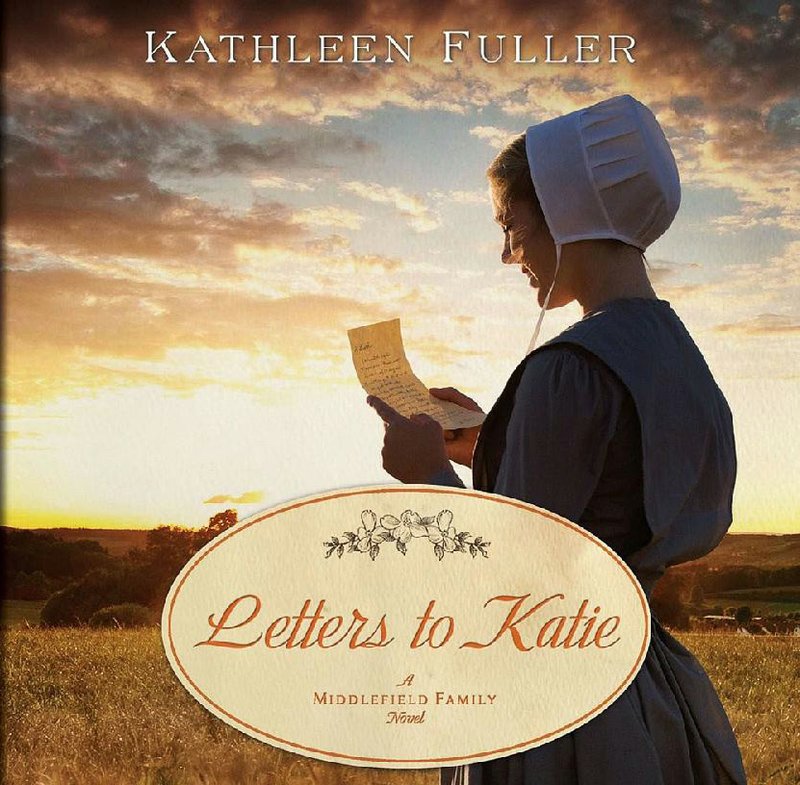Kathleen Fuller didn’t plan to become an author of Amish romance novels.
A Little Rock native who lives with her family in Geneva, Ohio, Fuller started out as a special education teacher, having received bachelor’s and master’s degrees from the University of Arkansas at Little Rock. But right after she and husband James married in 1994, they moved to Ohio. Staying at home to raise the first of their three children, she was looking for something to do.
“I had started doing a lot of novel reading, mainly Christian fiction,” she says. “I hadn’t had a desire to write but I’d always done well in my English classes. Then I read a book I didn’t like and I thought, hmmm, maybe I could do that.”
Fuller took correspondence courses on fiction and nonfiction writing, went to writers’ conferences and joined a writing group. That paid off when she sold her first two novellas in 2003.
Then she had a five year drought.
“That’s how it is when you’re a writer, feast or famine,” she says.
She kept writing Christian romances and eventually started selling again. Now she has 27 published novels and novellas to her credit and is working on the 28th. Her most recent book is Letters to Katie (Thomas Nelson, $15.99). Her other titles include A Place of His Own, Faithful to Laura and Treasuring Emma.
It was in 2008 when her agent, Talema Hancock Murray of the Steve Laube Agency, asked if she’d be interested in trying her hand at the growing subgenre of Amish romance.
“Since I was close to Amish country - it’s 40 minutes away - I said sure,” Fuller says. “I hit the wave right at the time it was beginning to get popular.”
Fuller visited the local Amish community of Littlefield and struck up a friendship with a woman there who has become her most valuable resource.
“She reads my books and makes sure they’re respectful and true - not true to life, since it’s fiction, but not off the rails, either,” she says. “She will say, ‘That would never happen here.’ I had an Amish couple divorcing in my first book, and they don’t believe in divorce.”
Many of the hallmarks of Amish life present challenges to Fuller’s writing. They are a quiet people who keep to themselves and don’t often mix with their “Yankee” neighbors (a term that Amish community uses to describe non-Amish; “English” is used in other communities). They are pacifistic, community-oriented and devout adherents to their variety of Christianity.
“Since I live so close to this community and I have Amish readers, I want to make sure they can read my book and not throw it against the wall or say that I’m being unfair to them or don’t know what I’m talking about,” she says. “Because I wouldn’t want anyone writing about my life or my family or my community and it being wrong and disrespectful.”
One aspect of Amish life she doesn’t touch upon is Rumspringa, the period from the late teens to early 20s when Amish youths are free to experience the outside world.
“The Amish do not like talking about it; it’s a private thing within their culture,” Fuller says. “The point of Rumspringa is to let kids experience the world because when they come back, if they come back, they make that commitment to being Amish knowing they’ve experienced everything.
“If people want to read about teenagers going wild,” she adds, “they can read their local paper.”
Along the same lines, you won’t find any bodice-ripping going on in Amish romances, either.
“Not at all,” she says, laughing. “Everything’s very chaste, very sweet. There’s no PDA [public display of affection], their courtships are very quiet. Sometimes the parents don’t even know their kids have been dating other kids until their engagement is announced in church. We do try to put in a little more showing of affection than would normally be seen by an outsider, but since we’re in our characters’ point of view, we can do that. But we still can’t go too far.”
Literary agent Murray has represented Fuller since very early in her career.
“She cares about her readers,” Murray says of Fuller. “She is very devoted and dedicated to them and wants to bring the best story she can, the most uplifting and enlightening stories that she can. I respect her greatly as a person and a writer.”
Murray says that while Amish fiction may sound odd to the uninitiated, it has been popular for a long time.
“It’s very much been a part of at least Christian publishing and many books have even hit The New York Times [paperback] best-seller list,” she says. “It’s been a type of book people love very much … people who like it will get their hands on everything they can.”
Fuller says those who still have trouble wrapping their heads around the concept of Amish plus romance should instead think about what it is fans are after, when you get right down to it: A good story.
“You’re interested in reading a story that’s on the sweet side, but you also get a glimpse into another culture, one you’re not too familiar with that’s in our country, a culture you may not have access to because you don’t live near the Amish.
“It hearkens back to another time, really - the horse and buggy, no electricity,” Fuller says. “If we all went off the grid or the grid went down, the Amish would be the most prepared for that,” Fuller says. “It can get you thinking.”
Style, Pages 48 on 10/27/2013
